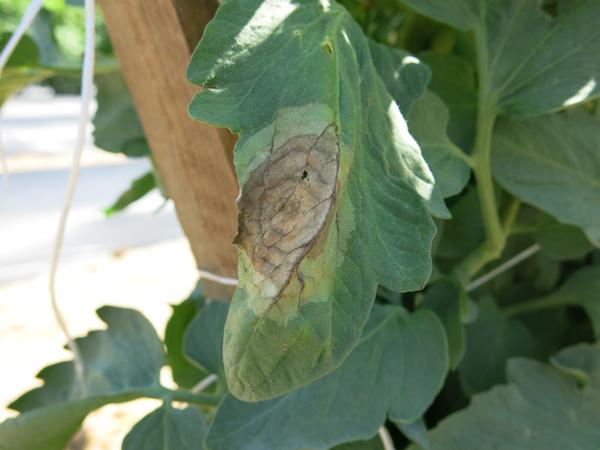

Spores will also overwinter in infected seed potatoes, so you should only plant certified disease-free seed potatoes. The spores only overwinter in living plants, so remove any volunteers and solanum weeds. If you must use sprinklers, water in the morning or early evening, so the leaves can dry out before nightfall. It is important that leaves don’t stay wet for long periods, so ideally you should use drip irrigation. To minimize the effects of this disease, make sure the plants have good drainage and air circulation (staking and pruning can help with tomatoes). Newer varieties specifically bred for resistance include Ferline’ F1 hybrid and 'Fantasio’ F1 hybrid. Simply put, tomato blight becomes the catch-all term for myriad pathogens and disorders that affect tomatoes. Green-black watery patches develop on the upper surfaces of. However, the dry winter in the Brazilian Mid-West is unfavourable to most foliar diseases.

Resistant tomato varieties include: Stupice, Legend, Juliet and Matt's Wild Cherry. Late blight is a fungal disease that attacks the older leaves first, then spreads to the fruit. Disease management options for organic tomato growers are limited. Resistant potato varieties include Defender, Cara, Sante, Cosmos, Romano and Jacqueline Lee. The Fresh Vegetable Growers of Ontario, Ontario Tomato Research Institute and the Ontario Agri-Food Innovation Alliance are calling for greater awareness of. The following varieties are considered blight resistant, though strains of the disease vary in their virulence and even resistant varieties may not be immune. If growing conditions are always favorable to this disease then its best to use resistant varieties. This disease affects yield, but doesn’t affect storability (don’t replant these of course). The only thing you can do in these circumstances is dig the tubers 2 weeks after the tops die down and use them. In Western Washington whole beds of Tomatoes and Potatoes died almost overnight. In cool wet weather you should watch for signs of infection and remove any affected plants immediately, but it’s an indication that the plants aren’t happy with the growing conditions. Brown sunken patches appear on the tubers and may spread into the flesh causing it to rot (or provide entry for other rot causing organisms). It first manifests itself as gray-brown necrotic patches on the margins of lower leaves, but these quickly enlarge and kill the whole leaves (sometimes overnight). This fungus prefers high humidity, wet weather and mild temperatures (50 to 80 degrees F). They can also be carried on the wind and in the right conditions they can travel long distances rapidly (as happened during the Potato Famine). The spores are most often carried by soil splashed on to leaves by rain or overhead irrigation. It is called Late Blight because it prefers warmer weather than Early Blight and usually occurs later in the year (it doesn’t usually bother early crops). Though best known as a potato disease, it also affects tomatoes, peppers and eggplant. We do see it every year, but in recent years it is more widespread on the processing tomatoes.”Įssex County is one of the largest producers in Ontario in terms of field and processing tomatoes.This fungus disease is notorious because it caused the Potato Famine that killed one and a half million Irish people and causing another million to emigrate. For information on registered tomato fungicides for Ontario, see OMAFRAs. “Once it gets in the field the spores get in the wind and it spreads. Early blight disease pressure is inconsistent at the Ridgetown Campus. Phytophthora blight occurred in 2006 in Haldimand-Norfolk and Essex counties on field cucumber and pepper, respectively, and in Essex county in 2007 on field. “We are advising growers to use treatments to avoid getting the disease in their fields. “It’s a fast-acting disease so it takes down a crop pretty fast,” she said. It really takes a bite into our financials because it’s not something you plan on. The tomato (/ t m e t o / or / t m t o /) is the edible berry of the plant Solanum lycopersicum, commonly known as the tomato plant. “For us, it was about 80 per cent of the plants affected. Tomatoes: whole, halved vertically and halved horizontally. “Every farmer has had an issue with it,” said Monica Brandner of Brandner Farms in Ruthven. Late blight has been more widespread than normal creating havoc and destroying up to 80 per cent of open field tomato crops on farms across Essex County. This year’s wet and cooler summer has been a nightmare for anyone in Ontario attempting to grow open field tomatoes either as farm produce or right in their own backyard.


 0 kommentar(er)
0 kommentar(er)
